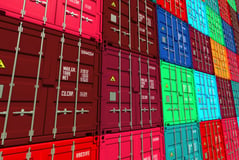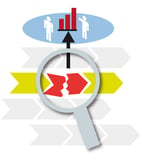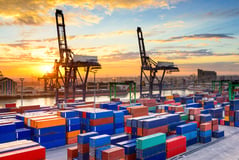The Top 5 Supply Chain Challenges for 2021
Brian Hoey - November 26, 2020

 Let’s be real, there’s only one top supply chain challenge for 2021. It’s the same top challenge that supply chain managers have been grappling with for the vast majority of 2020: keeping operations on track in spite of the coronavirus and all of its attendant disruptions. These disruptions have taken all shapes and sizes, from the obvious supply shortfalls that arose from an overreliance on single-sourcing in impacted areas, to more complex issues like the toilet paper shortages that resulted when commercial toilet paper production (which involves large rolls and thinner paper) couldn’t be easily converted to consumer toilet paper production—in spite of the huge spike in demand.But within that overarching challenge, there are any number of smaller challenges that will define your success or failure under these virtually unprecedented circumstances. Perhaps unsurprisingly, these don't look that different from the top challenges of years past—it’s just that the pandemic has shed new light on them and, in many cases, made them more acute.
Let’s be real, there’s only one top supply chain challenge for 2021. It’s the same top challenge that supply chain managers have been grappling with for the vast majority of 2020: keeping operations on track in spite of the coronavirus and all of its attendant disruptions. These disruptions have taken all shapes and sizes, from the obvious supply shortfalls that arose from an overreliance on single-sourcing in impacted areas, to more complex issues like the toilet paper shortages that resulted when commercial toilet paper production (which involves large rolls and thinner paper) couldn’t be easily converted to consumer toilet paper production—in spite of the huge spike in demand.But within that overarching challenge, there are any number of smaller challenges that will define your success or failure under these virtually unprecedented circumstances. Perhaps unsurprisingly, these don't look that different from the top challenges of years past—it’s just that the pandemic has shed new light on them and, in many cases, made them more acute.
Increasing Resiliency
While the ability to weather change has always been a key to supply chain success, the trends over the past couple of decades have resulted in an emphasis on lean processes over the kinds of redundancies that can make changes easier to manage. The result is that supply chains seem less resilient overall; they’re often operating with less safety stock than ever, striving for just-in-time inventory replenishment, production, and delivery, and ultimately living with higher levels of risk. Ditching these lean strategies can come with significant costs and ongoing capital commitments, but the disruptions of the past few months are making businesses rethink their lean supply chain and production networks. Ultimately, it’s a balancing act: you need to recalculate your assumptions about the risk of disruptions and shortages, reassess your own risk tolerance accordingly, and then balance your buffer stock at various touchpoints to match that risk tolerance. At the same time, you’ll need to build strong, diverse supplier relationships, avoid single-sourcing, and do your best to enhance visibility up and down the chain.
Boosting Flexibility
What’s the difference between resilience and flexibility? A resilient supply chain can weather the storm if one of their suppliers has to shut down production—a flexible supply chain can adapt to new market needs and conditions in the blink of an eye. Both of these traits require high levels of visibility and integration, but true flexibility also necessitates the ability to plan and re-plan in real-time. If, for instance, a company that offers a wide portfolio of different models of a particular vehicle experiences a demand spike for one model over another, supply chain flexibility would enable them to see that demand spike coming and make proactive adjustments to their production and sourcing ratios—and potentially even to temporarily increase their production capacity by coordinating between plants in different locales—and ultimately meet demand. As the pandemic goes on and the global economy reopens at an uneven pace, you can expect more of the sorts of highly-specific spikes in product demand that we’ve already seen for things like hand sanitizer and bicycles.
Gaining End-to-End Visibility
Now, both of the characteristics of successful supply chains that we outlined above depend above all else on one thing: visibility. But gaining end-to-end supply chain visibility is a challenge in and of itself—in fact, it’s the same challenge that supply chain planners have been working to overcome for decades. In the era of Industry 4.0 and digital transformation, visibility tends to come from things technology integration—including anything from the presence of IoT devices on the factory floor that provide real-time production feedback, to RFID chips across your fleet of vehicles to give live logistics information, to shared IT between your planners and your suppliers that can offer insight into current availabilities and pricing for raw goods. As supplier management becomes increasingly mission critical, this latter form of integration will be particularly important. Success here is, of course, partly a function of building strong, collaborative relationships—relationships in which data sharing is mutually beneficial and helps improve performance up and down the chain. It’s also, however, a matter of choosing the right technology, such that you’re both able to integrate data from different sources and get buy-in for that integration without too much resistance.
Improving Disruption and Change Management
Flexibility and resilience are both critical traits for success in a volatile supply chain, but change management per se is its own skill altogether. And, with the rate of change and disruption increasing, it’s important to focus specifically on dealing with disruptions in addition to avoiding them (via flexibility, e.g.). This will be a largely operational hurdle—i.e. it will involve establishing point people and protocols for particular sorts of events and changes—but it’s something where modern digital technology can play a big role. For instance, if your IT ecosystem is set up to power digital twins (digital representations of physical systems like production or logistics networks, established for the purpose of running simulations), you can test out different hypothetical scenarios and get analytically-derived insights into what different planning scenarios would yield. In this way, you can model the optimal responses to large scale disruptions ahead of time, such that you’re prepared if they eventually materialize.
Getting Value from Data
Digital twins might seem like an intriguing technology, but when it comes to AI and advanced analytics, they’re just the tip of the iceberg. Upgrading to smart, digital data analysis has been a stumbling block for numerous supply chain businesses in recent years, but the potential value for something like machine learning is greater than it’s ever been. The more technology integration you have up and down the value stream, the more data you’re going to generate—you can either let that data languish unused, or you can turn into more accurate forecasts, predictions, and process improvements than ever before. For example, with a large cache of logistics data and transportation forecasting solution, you can estimate your future logistics needs vs. available capacity in order to proactively secure freight at the right price on mode-by-mode or lane-by-lane basis. By the same token, you could feed IoT and sensor data from your production plant into an advanced prescriptive analytics algorithm in order to produce suggestions for potential process improvements. In this way, you’re able to get more proactive and more efficient—two things that will become harder and harder to live without in these uncertain times.
Download Your Guide to Managing Cost Pressures in the Modern Supply Chain:
LATEST POSTS
- Understand Circular Economy in The Manufacturing Industry
- How Can Industry 4.0 IT Integration Be Achieved Smoothly?
- The Significance of Order Sequencing in Discrete Manufacturing
- How to improve your Supply Chain Management: The Power of Control Towers
- Optimizing Human Resource Scheduling in Manufacturing: A Technological Approach



